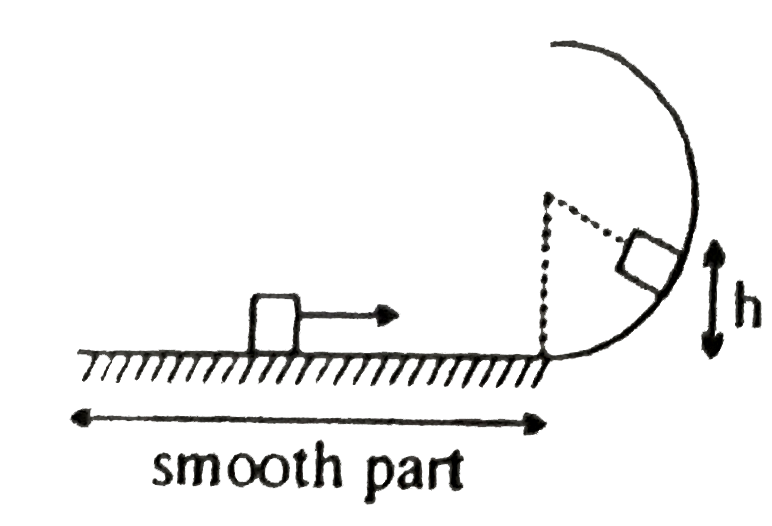An object of mass m slides down a hill of height h and of arbitrary shape and stops at the bottom because of friction. The coefficient of friction may be different for different segments of the path. Work required to return the object to its position along the same path by a tangential force is
The correct Answer is:2 mgh
Step by step video, text & image solution for An object of mass m slides down a hill of height h and of arbitrary shape and stops at the bottom because of friction. The coefficient of friction may be different for different segments of the path. Work required to return the object to its position along the same path by a tangential force is by Physics experts to help you in doubts & scoring excellent marks in Class 11 exams.
Updated on:21/07/2023Topper's Solved these Questions
- FRICTION, WORK POWER AND ENERGYBOOK - NN GHOSHCHAPTER - FRICTION, WORK POWER AND ENERGYEXERCISE - Exercises (A)
15 Videos
- FIRST LAW OF THERMODYNAMICSBOOK - NN GHOSHCHAPTER - FIRST LAW OF THERMODYNAMICSEXERCISE - All Questions
39 Videos
- GRAVITATIONBOOK - NN GHOSHCHAPTER - GRAVITATIONEXERCISE - EXERCISE
29 Videos
Similar Questions
A small block of mass m ,slides down a smooth incline plane of height h and moves some distance on rough horizontal surface before coming to rest.The coefficient of friction between block and horizontal surface is μ .The minimum work to be done on the block to it move it back to original position along the same path is: 1) mgh 2) 2mgh 3) 3mgh 4) (1+μ)mgh
View SolutionAn object of mass 6 kgis sliding on a frictionless horizontal surface with a uniform speed of 3 m/s. the force required to keep the object moving at the same speed along the same straight line is
View Solution
Knowledge Check
An object of mass m slides down a hill of arbitrary shape and after travelling a certain horizontal path stops because of friction. The total vertical height descended is h. The friction coefficient is different for different segments for the entire path but is independent of the velocity and direction of motion. The work that a tangerial force must perform to return the object to its initial position along the same path is
A(a) mghB(b) −mghC(c) −2mghD(d) 2mghAn object of mass m is slowly pushed some partway up a verticle up a verticle loop ending at a point a height h<R above the bottom. The coefficient of friction between the object and the track is a constant mu. Find work that has to be done against friction.
 A2μmg(2hR−h2)1/2Bμmg(hR−2h2)1/2C4μmg(2hR−h2)1/2Dμmg(2hR−h2)1/2
A2μmg(2hR−h2)1/2Bμmg(hR−2h2)1/2C4μmg(2hR−h2)1/2Dμmg(2hR−h2)1/2A body of mass 0.5 kg is taken up an inclined plane of length 10 m and height 5 m and then allowed to slide down to the bottom again. The coefficient of friction between the body and the plane is 0.1. The work done by the frictional force over the round trip is
A5 JB5√3JC−5JD−5√3J
A body of mass m is moved up (slowly) the plane of verying slope by a tangential force upto height h. The coefficient of friction between the surface and the block is μ.

Select correct option(s)
View SolutionA body of mass m is moved up (slowly) the plane of verying slope by a tangential force upto height h. The coefficient of friction between the surface and the block is μ.

Select correct option(s)
View SolutionA block of mass m slides down a rough inclined plane of inclination θ with horizontal with zero initial velocity. The coefficient of friction between the block and the plane is μ with θ>tan−1(μ). Rate of work done by the force of friction at time t is
View SolutionA block of mass m slides down a rough inclined plane of inclination θ with horizontal with zero initial velocity. The coefficient of friction between the block and the plane is μ with θ>tan−1(μ). Rate of work done by the force of friction at time t is
View SolutionA block of mass 1 kg slides down a vertical curved track that is one quadrant of a circle of radius 1m. Its speed ast the the bottom si 2m/s. The work done by frictional force is :

View Solution
